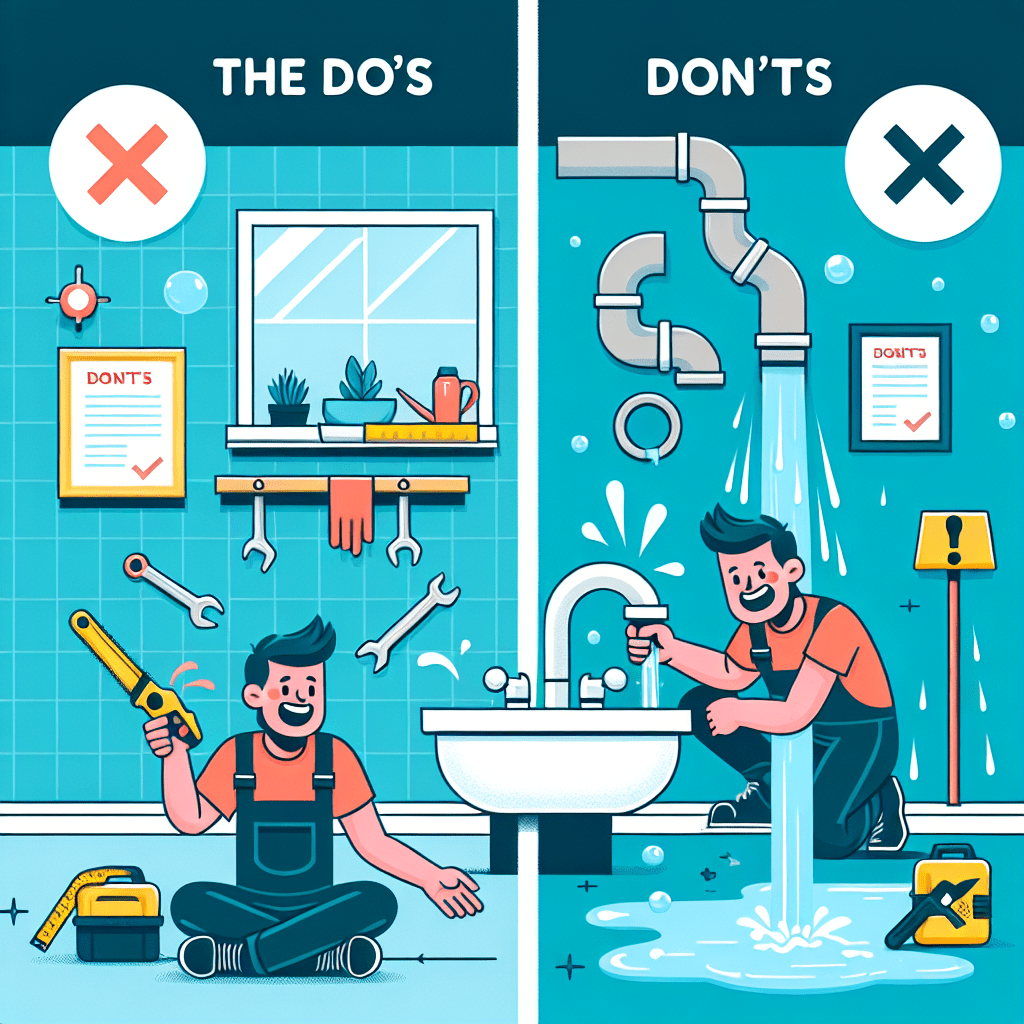DIY plumbing projects can save you money and give you a sense of accomplishment. However, there are certain dos and don’ts that you need to keep in mind to ensure the success of your project and avoid costly mistakes. In this article, we will outline the key dos and don’ts of DIY plumbing to help you tackle your plumbing projects with confidence.
The Dos
Do your research
Before starting any DIY plumbing project, it is essential to do your research. Make sure you understand the necessary steps, materials, and tools required for the project. Consulting online resources, instructional videos, and plumbing guides can help you plan and execute your project effectively.
Do shut off the water
Before working on any plumbing fixtures or pipes, always shut off the water supply to prevent leaks and potential water damage. Locate the main shut-off valve in your home and turn it off before starting your project. This simple step can save you from a plumbing disaster.
Do invest in quality tools
Investing in quality plumbing tools can make your DIY Projects much easier and more successful. Make sure you have basic tools like pipe wrenches, plungers, and drain snakes in your toolbox. High-quality tools will last longer and give you better results.
Do start with simple projects
If you are new to DIY plumbing, start with simple projects like fixing a leaky faucet or unclogging a drain. These projects require basic skills and tools and can help you gain confidence before tackling more complex plumbing tasks.
The Don’ts
Don’t ignore plumbing codes
Ignoring plumbing codes and regulations can lead to serious safety hazards and legal consequences. Make sure you research and follow local plumbing codes when undertaking any DIY plumbing project. This will ensure your project is safe, compliant, and up to standard.
Don’t overtighten fittings
One common mistake that DIY plumbers make is overtightening fittings. Over-tightening can damage pipes and fittings, leading to leaks and costly repairs. Use a torque wrench or hand-tighten fittings only until snug to avoid damaging your plumbing system.
Don’t use incorrect materials
Using incorrect materials in your DIY plumbing projects can result in leaks, damage, and costly repairs. Make sure you use the right type and size of pipes, fittings, and fixtures for your project. Consult a professional or refer to plumbing guides to ensure you are using the correct materials.
Don’t ignore warning signs
If you notice warning signs like water stains, mold, or strange noises in your plumbing system, don’t ignore them. These signs could indicate underlying problems that need immediate attention. Addressing issues early can prevent major plumbing disasters down the line.
Conclusion
By following the dos and don’ts of DIY plumbing outlined in this article, you can successfully tackle plumbing projects in your home while avoiding costly mistakes. Remember to do your research, shut off the water supply, invest in quality tools, and start with simple projects. Avoid ignoring plumbing codes, overtightening fittings, using incorrect materials, and ignoring warning signs to ensure the success of your DIY plumbing projects.
FAQs
Q: Is DIY plumbing difficult?
A: DIY plumbing can be challenging, but with the right research, tools, and skills, you can successfully complete many plumbing projects in your home.
Q: How can I prevent leaks in my DIY plumbing projects?
A: To prevent leaks, make sure to shut off the water supply, use the correct materials, and avoid overtightening fittings in your DIY plumbing projects.
Q: When should I call a professional plumber?
A: If you encounter a plumbing issue that is beyond your skill level or requires specialized tools and knowledge, it is best to call a professional plumber to avoid causing further damage.
Tip
When in doubt, it is always better to consult a professional plumber for advice or assistance with your DIY plumbing projects. They can provide valuable insights, expertise, and guidance to help you complete your project successfully and avoid costly mistakes.
#Dos #Donts #DIY #Plumbing

